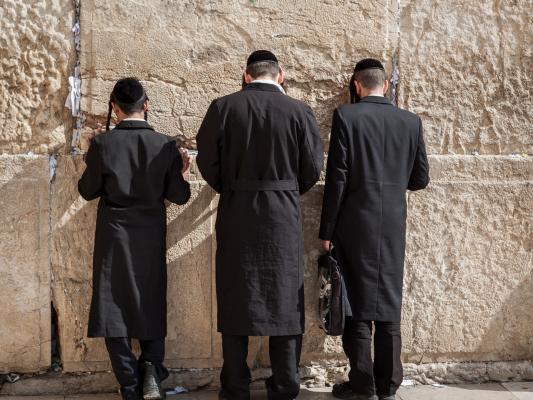

Learning resource
Ontwikkeling van een kritische analyse tegen religieuze discriminatie
- Leerkrachten ideeën aanreiken over hoe studenten bewust kunnen worden gemaakt van het belang om geen verband te leggen tussen islam en terrorisme.
- Het voorkomen van culturele en religieuze discriminatie van moslims.
- Middelen ter beschikking stellen die kunnen helpen bij het onderwijsproces om vanuit een kritisch perspectief alle van de media ontvangen boodschappen te analyseren.
- Om te achterhalen wanneer we discriminerend taalgebruik hanteren.
- De precieze betekenis en implicaties begrijpen van verschillende termen die gewoonlijk verkeerd worden begrepen en gebruikt.
- Bevordering van een interculturele dialoog.
This awareness module can start with a discriminatory situation that a student may have experienced. For instance, two Muslim students were discriminated during the school break: they were accused by the others of being partly responsible for recent terrorist attacks. The discriminated students start by explaining to the whole group how they felt in the situation, what actually happened, and why they think it happened.
The individual steps for leading such a session, and, more importantly, the concepts that are about to be introduced to the students, must be very clear to the teacher. For this reason, this particular awareness module not only helps to develop background knowledge on the topic, but also explicitly lists steps to be followed in order to implement this knowledge during a session with the students.
First part
Step 1.1: After the group has listened to the testimony of the discriminated students, the educator shows them some news articles (see annex) in order for them to realise that this is a general problem happening all around the world, and not only an exceptional case in their school. Jewish students in particular are often subject to permanent discrimination in schools. In many areas, where Christians are a minority, it is the Jewish students that are most often victims of bullying. A debate follows and in the end the educator explains the different concepts that are usually misunderstood, so as to destroy the myths and misconceptions about Islam.
Step 1.2: There are some questions that can be exposed so that a debate can be generated:
- Have you experienced, or heard about similar situations to the ones exposed in the articles we have just read?
- Do you think such reactions against Muslims are fair? Why/why not?
- What do you know about Islam? Do you know any Muslims?
- What are the unfounded myths we usually hear about Islam?
- Do you know the difference between Muslim, Arab, Islam, Islamist, Jihadist?
Second part
Step 2.1: A commentary on some of the beliefs associated with Islam; the educator helps the group to analyse the comments:
- Myth 1: "Muslim women are obliged to wear hijab"
- Myth 2: "Muslims abuse our system and do not integrate into our society"
- Myth 3: "All Islamists are terrorists"
- Myth 4: "In mosques there are only radicals that foment terrorism"
- Myth 5: "The Koran only incites hatred"
It is important that the educator deeply reflects on these myths, as well as their own values or opinions about them, so that they can have a very clear idea about which counter-arguments to the presented myths they should use.
Step 2.2: The educator explains the difference between Arabs, Muslims, Islamists and jihadists.
- Arab: regardless of their religion or political orientation, a person born in an Arabic speaking country is called an Arab. However, we must not forget that the Arab countries include other languages and other cultures: Berbers and Kurds, for example, live in Arab countries, but they do not speak Arabic. You can be Arab and not be a Muslim, like, for example, the Copts (a Christian religious minority in Egypt), or the Arab Jews.
- Muslim: A Muslim is a person who believes in "the religion of Muhammad". There are many different branches within the Islamic religion, the two main ones being "Sunni" and "Shi'a". It should be noted that only 20% of Muslims come from Arab countries. Most Muslims live in non-Arab countries such as Indonesia, Pakistan, India, and Bangladesh.
- Islamist: "An Islamist is a person who creates a political ideology out of Islam." It is imperative to clarify the distinction between the expressions Islamic and Islamist. The following should be made clear: "Islamic means "related to Islam" (e. g. Islamic culture, architecture...), while Islamist refers to a person who advocates the application of Islamic law in political life". In Islamic States, Islam is a state religion. These countries are ruled by the Islamic law, also known as Sharia. This is the case, for example, in Saudi Arabia, or Egypt. There are also five Islamic constitutional states called Islamic Republics: Pakistan, Iran, Mauritania, Maldives and Afghanistan. Terms linked with this concept include "Islamic fundamentalism" the most violent branch of which is called jihadism.
- Jihadist: Jihadism is the radical ideological tendency advocated by jihad.
Step 2.3: The educator can present the Not in my name movement, as an example of an initiative against Islamophobia, in order to incite a debate:
"#NotInMyName is a movement initiated by British Muslims, protesting against and condemning followers of ISIS because they are un-Islamic, evil; because they abuse the name of Islam, abuse hearts and minds, and have no compassion." The movement became popular mostly through social networks.
Here is an excerpt from their website campaign: “As British Muslims we utterly condemn ISIS who are abusing the name of Islam with their acts of terrorism. We call on fellow British Muslims to unite and denounce this evil group and their acts – which are done #NotInMyName”
And here are some of their comments, referring to the extremist terrorist attacks, or posted in order to avoid hate and xenophobia against Muslims: “Because it’s totally un – Islamic”, “Because you abuse hearts and minds”, “Because you have no compassion” #NotInMyName.
Sources
Om het leerproces van de student te evalueren, kan het nuttig zijn om te zoeken naar verdere nieuwsberichten of korte video's waar een discriminerende situatie plaatsvindt. Om na te gaan of de studenten de essentie van de sessie hebben begrepen, kan de trainer elke student vragen om een korte samenvatting van zijn/haar eigen gedachten over de blootgelegde zaak op te schrijven. Door de teksten door te lezen kan de trainer detecteren welke studenten niet het gewenste niveau van begrip hebben bereikt en beslissen om tijdens opeenvolgende sessies het onderwerp in detail individueel te bespreken.
Italian
Portuguese, Portugal
French
Slovenian
English
German
Romanian
Greek
Spanish
Dutch
